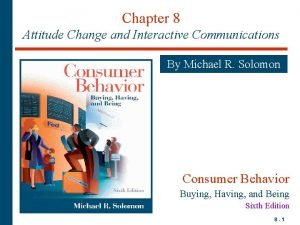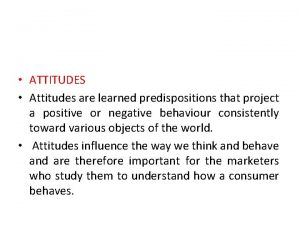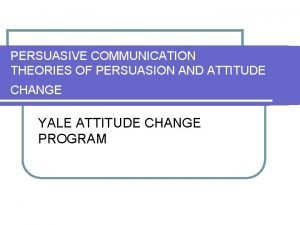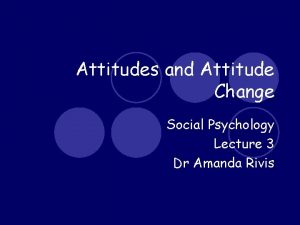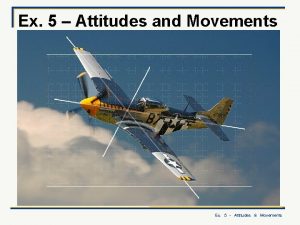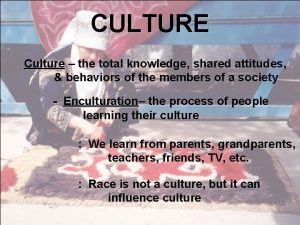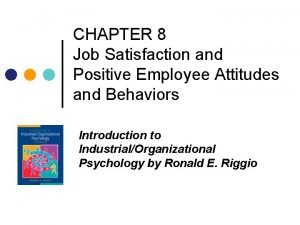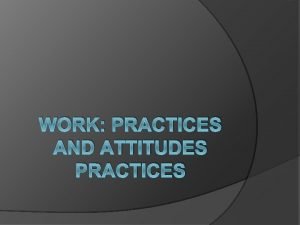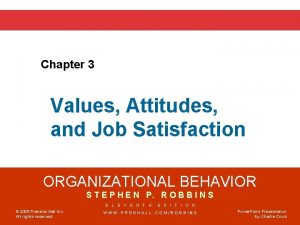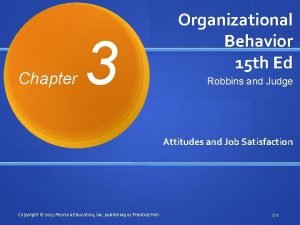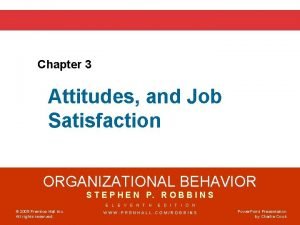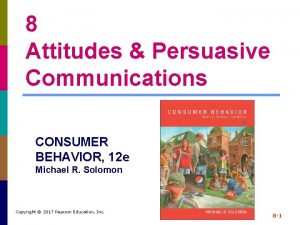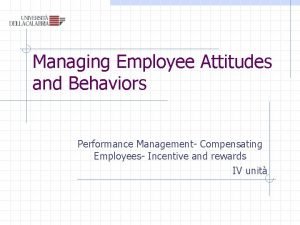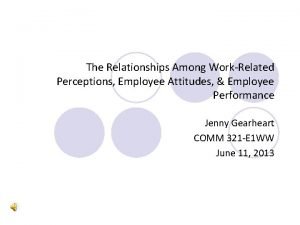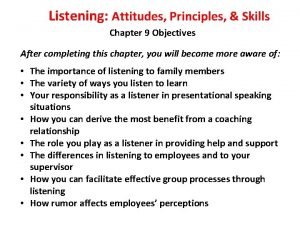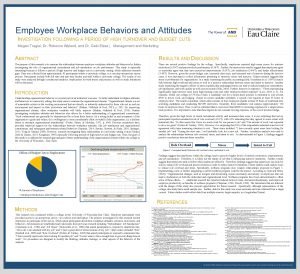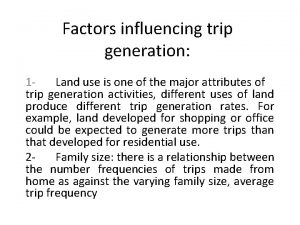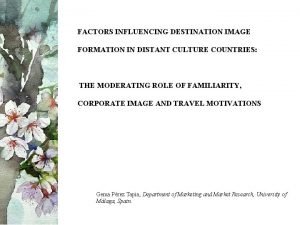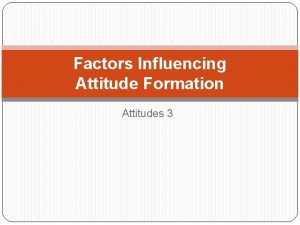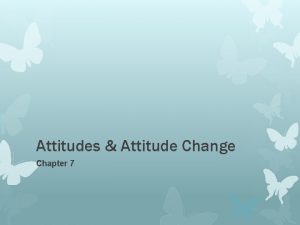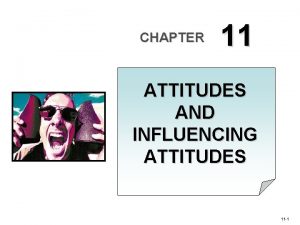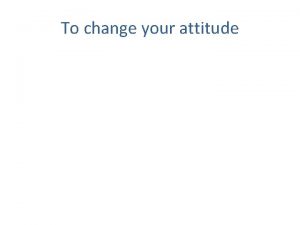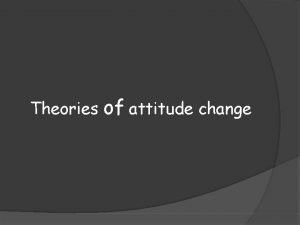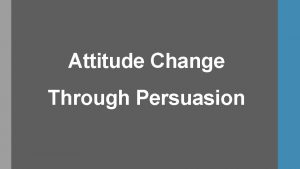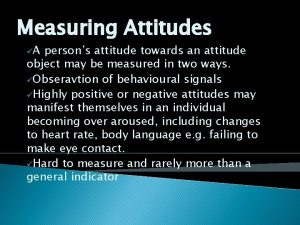Section I Attitudes and Attitude Change Influencing Thoughts







































































- Slides: 71

Section I Attitudes and Attitude Change: Influencing Thoughts and Feelings Aronson Social Psychology, 5/e Copyright © 2005 by Prentice-Hall, Inc.

Warm Up Activity Self Image Survey Aronson Social Psychology, 5/e Copyright © 2005 by Prentice-Hall, Inc.

Setting the Stage for Change • Why will organizations continue to change? • Why will people resist change? • What is the traditional way we change? Aronson Social Psychology, 5/e Copyright © 2005 by Prentice-Hall, Inc.

Discussion questions focusing on organization • What changes are we going through? • What is the effect on people related to these changes? • Think about the reasons people don’t change. What can we do to help them? • What are the consequences if we don’t change? • What are the benefits to our organization if change is managed successfully? Aronson Social Psychology, 5/e Copyright © 2005 by Prentice-Hall, Inc.

Self Image Survey Review Where do you want to grow and improve? Aronson Social Psychology, 5/e Copyright © 2005 by Prentice-Hall, Inc.

Break Aronson Social Psychology, 5/e Copyright © 2005 by Prentice-Hall, Inc.

Define Attitude Aronson Social Psychology, 5/e Copyright © 2005 by Prentice-Hall, Inc.

The Nature and Origin of Attitudes Where do attitudes come from? Aronson Social Psychology, 5/e Copyright © 2005 by Prentice-Hall, Inc.

The Nature and Origin of Attitudes • Where Do Attitudes Come From? Aronson Social Psychology, 5/e Copyright © 2005 by Prentice-Hall, Inc.

The Nature and Origin of Attitudes-How we display them: Difference between: • Explicit Attitudes • Implicit Attitudes Aronson Social Psychology, 5/e Copyright © 2005 by Prentice-Hall, Inc.

How do our attitudes affect organizational change? • Negatively • Positively Aronson Social Psychology, 5/e Copyright © 2005 by Prentice-Hall, Inc.

Section II How Do Attitudes Change? Aronson Social Psychology, 5/e Copyright © 2005 by Prentice-Hall, Inc.

How do Attitudes Change? Attitudes may be very changeable; changes are frequently due to social influence. Aronson Social Psychology, 5/e Copyright © 2005 by Prentice-Hall, Inc.

How do Attitudes Change? • Changing Attitudes by Changing Behavior: Cognitive Dissonance Theory Revisited Aronson Social Psychology, 5/e Copyright © 2005 by Prentice-Hall, Inc.

How do Attitudes Change? • Persuasive Communications and Attitude Change The study of persuasive communication by social psychologists began with the Yale Attitude Change approach, which examines the conditions under which people are most likely to change their attitudes in response to a persuasive appeal and focuses on who said what to Aronson Social Psychology, 5/e whom. Copyright © 2005 by Prentice-Hall, Inc.

How do Attitudes Change? • Persuasive Communications and Attitude Change Aronson Social Psychology, 5/e Copyright © 2005 by Prentice-Hall, Inc.

How do Attitudes Change? • Persuasive Communications and Attitude Change Aronson Social Psychology, 5/e Copyright © 2005 by Prentice-Hall, Inc.

How do Attitudes Change? Are people paying attention? Aronson Social Psychology, 5/e Copyright © 2005 by Prentice-Hall, Inc.

How do Attitudes Change? What affect does emotion have on attitude change? Aronson Social Psychology, 5/e Copyright © 2005 by Prentice-Hall, Inc.

Exercise: Perceived Environment: • Beliefs • Feelings • Behavioral Intentions Aronson Social Psychology, 5/e Copyright © 2005 by Prentice-Hall, Inc.

Smile Aronson Social Psychology, 5/e Copyright © 2005 by Prentice-Hall, Inc.

Practice Smiling Aronson Social Psychology, 5/e Copyright © 2005 by Prentice-Hall, Inc.

How do Attitudes Change? • Emotion and Attitude Change However, people want to preserve good moods, so they will avoid activities that might spoil their good mood. This means that people in good moods will often avoid paying close attention to a persuasive communication, because they think that doing so will lower their mood. Aronson Social Psychology, 5/e Copyright © 2005 by Prentice-Hall, Inc.

How do Attitudes Change? • Emotion and Attitude Change Fear-arousing communications are most effective if they induce a moderate amount of fear and people believe that listening to the message will reduce this fear. If the message is too scary or not scary enough, it will fail. Aronson Social Psychology, 5/e Copyright © 2005 by Prentice-Hall, Inc.

How do Attitudes Change? • Emotion and Attitude Change In the heuristic-systematic model of persuasion, when people take the peripheral route to persuasion they often use heuristics, e. g. , “length equals strength, ” or “Experts are always right. ” Aronson Social Psychology, 5/e Copyright © 2005 by Prentice-Hall, Inc.

How do Attitudes Change? • Emotion and Attitude Change Aronson Social Psychology, 5/e Copyright © 2005 by Prentice-Hall, Inc.

How do Attitudes Change? • Emotion and Attitude Change Emotions and moods themselves can be used as a heuristic; we ask ourselves “How do I feel about it? ” and if we feel good, we infer we have a positive attitude. This can get us into trouble if the good feelings are due to something other than the attitude object. Aronson Social Psychology, 5/e Copyright © 2005 by Prentice-Hall, Inc.

How do Attitudes Change? • Emotion and Attitude Change The central route to persuasion works well for cognitively based attitudes but not for affectively based ones. If an attitude is cognitively based, it is best to use rational arguments to change it. Aronson Social Psychology, 5/e Copyright © 2005 by Prentice-Hall, Inc.

How do Attitudes Change? • Emotion and Attitude Change Affectively based attitudes can be changed using persuasive communications that are emotional. Aronson Social Psychology, 5/e Copyright © 2005 by Prentice-Hall, Inc.

How do Attitudes Change? • Emotion and Attitude Change In general, advertisements work best if they are tailored to the kind of attitude they are trying to change. Aronson Social Psychology, 5/e Copyright © 2005 by Prentice-Hall, Inc.

Chapter Outline III. Resisting Persuasive Messages Aronson Social Psychology, 5/e Copyright © 2005 by Prentice-Hall, Inc.

Resisting Persuasive Messages • Attitude Inoculation One way to bolster people against persuasion attempts is to have them consider the arguments for and against their attitude before somebody attacks it. Aronson Social Psychology, 5/e Copyright © 2005 by Prentice-Hall, Inc.

Resisting Persuasive Messages • Attitude Inoculation Attitude inoculation procedure does this by exposing people to a small dose of the argument against their position; this induced them to counter-argue and provide a “vaccination” that helps people ward off later, stronger influence attempts. Aronson Social Psychology, 5/e Copyright © 2005 by Prentice-Hall, Inc.

Resisting Persuasive Messages • Being Alert to Product Placement Aronson Social Psychology, 5/e Copyright © 2005 by Prentice-Hall, Inc.

Resisting Persuasive Messages • Resisting Peer Pressure Attitude inoculation that is designed to combat affectively based persuasion techniques can be effective at helping people resist peer pressure. Aronson Social Psychology, 5/e Copyright © 2005 by Prentice-Hall, Inc.

Resisting Persuasive Messages • When Persuasion Attempts Boomerang: Reactance Theory It is important not to use too heavy a hand when trying to immunize people against assaults on their attitudes. If you administer too strong a prohibition, the prohibition may boomerang and lead to an increase in the prohibited activity. Aronson Social Psychology, 5/e Copyright © 2005 by Prentice-Hall, Inc.

Resisting Persuasive Messages • When Persuasion Attempts Boomerang: Reactance Theory Reactance theory explains this by saying that strong prohibitions threaten a person’s feeling of freedom, and engaging in the forbidden behavior is an attempt to restore that feeling of freedom. Aronson Social Psychology, 5/e Copyright © 2005 by Prentice-Hall, Inc.

Chapter Outline IV. When Will Attitudes Predict Behavior? Aronson Social Psychology, 5/e Copyright © 2005 by Prentice-Hall, Inc.

When Will Attitudes Predict Behavior? • Sometimes people’s behaviors do not correspond to their attitudes. Aronson Social Psychology, 5/e Copyright © 2005 by Prentice-Hall, Inc.

When Will Attitudes Predict Behavior? • Predicting Spontaneous Behaviors Attitude accessibility is the strength of the association between an attitude object and a person’s evaluation of the object, measured by the speed with which people can report how they feel about the object. Aronson Social Psychology, 5/e Copyright © 2005 by Prentice-Hall, Inc.

When Will Attitudes Predict Behavior? • Predicting Deliberative Behaviors The theory of planned behavior is a theory of how attitudes predict planned, deliberative behavior; according to this theory the best predictors of these behaviors are the person’s specific attitudes, his or her subjective norms, and his or her perceived control over the behavior. Aronson Social Psychology, 5/e Copyright © 2005 by Prentice-Hall, Inc.

When Will Attitudes Predict Behavior? • Predicting Deliberative Behaviors Aronson Social Psychology, 5/e Copyright © 2005 by Prentice-Hall, Inc.

When Will Attitudes Predict Behavior? • Predicting Deliberative Behaviors The attitude that is important is not a general attitude but their attitude toward the specific behavior in question. Aronson Social Psychology, 5/e Copyright © 2005 by Prentice-Hall, Inc.

When Will Attitudes Predict Behavior? • Predicting Deliberative Behaviors Subjective norms are people’s beliefs about how those they care about will view the behavior in question. Perceived behavioral control is the ease with which people believe they can perform the behavior. Aronson Social Psychology, 5/e Copyright © 2005 by Prentice-Hall, Inc.

Chapter Outline V. The Power of Advertising Aronson Social Psychology, 5/e Copyright © 2005 by Prentice-Hall, Inc.

The Power of Advertising Wilson and Brekke (1994) found that most people think advertising works on everybody but themselves. Aronson Social Psychology, 5/e Copyright © 2005 by Prentice-Hall, Inc.

The Power of Advertising • How Advertising Works If a product is personally relevant, the best way to change it is through strong arguments; if a product is not personally relevant, advertising may attempt to make it seem so. Aronson Social Psychology, 5/e Copyright © 2005 by Prentice-Hall, Inc.

The Power of Advertising • How Advertising Works Ads may also try to make attitudes more affectively based by associating the product with emotions and values. Aronson Social Psychology, 5/e Copyright © 2005 by Prentice-Hall, Inc.

The Power of Advertising • Subliminal Advertising: A New Form of Mind Control? Subliminal messages are words or pictures that are not consciously perceived but that supposedly influence people’s judgments, attitudes, and behaviors. Aronson Social Psychology, 5/e Copyright © 2005 by Prentice-Hall, Inc.

The Power of Advertising • Subliminal Advertising: A New Form of Mind Control? Aronson Social Psychology, 5/e Copyright © 2005 by Prentice-Hall, Inc.

The Power of Advertising • Subliminal Advertising: A New Form of Mind Control? Although most people believe that subliminal messages work, controlled studies do not indicate that they are effective when used in everyday life. Aronson Social Psychology, 5/e Copyright © 2005 by Prentice-Hall, Inc.

The Power of Advertising • Subliminal Advertising: A New Form of Mind Control? There is some evidence that subliminal messages may be effective in controlled laboratory studies. But subliminal effects only occur under very carefully controlled conditions. Aronson Social Psychology, 5/e Copyright © 2005 by Prentice-Hall, Inc.

The Power of Advertising • Subliminal Advertising: A New Form of Mind Control? The hysteria about subliminal advertising tends to obscure the powerful effects that consciously perceived ads can have on important societal issues. One example of their influence is their reinforcement and perpetuation of stereotypes. Aronson Social Psychology, 5/e Copyright © 2005 by Prentice-Hall, Inc.

The Power of Advertising • Advertising, Cultural Stereotypes, and Social Behavior Stereotype threat is the apprehension experienced by members of a group that their behavior might confirm a cultural stereotype. Aronson Social Psychology, 5/e Copyright © 2005 by Prentice-Hall, Inc.

The Power of Advertising • Advertising, Cultural Stereotypes, and Social Behavior Aronson Social Psychology, 5/e Copyright © 2005 by Prentice-Hall, Inc.

The Power of Advertising • Advertising, Cultural Stereotypes, and Social Behavior Aronson Social Psychology, 5/e Copyright © 2005 by Prentice-Hall, Inc.

Study Questions What is an attitude and what are its components? Why is it important to consider each of these components? Aronson Social Psychology, 5/e Copyright © 2005 by Prentice-Hall, Inc.

Study Questions What are the origins and aspects of affectively based attitudes? Aronson Social Psychology, 5/e Copyright © 2005 by Prentice-Hall, Inc.

Study Questions When do people infer their attitudes from their behavior? Aronson Social Psychology, 5/e Copyright © 2005 by Prentice-Hall, Inc.

Study Questions What is the relationship between attitude accessibility and attitude strength? How does an attitude become accessible? Aronson Social Psychology, 5/e Copyright © 2005 by Prentice-Hall, Inc.

Study Questions When does counterattitudinal advocacy lead to private attitude change? What is the process underlying this change? Aronson Social Psychology, 5/e Copyright © 2005 by Prentice-Hall, Inc.

Study Questions According to the Yale Attitude Change Approach, what are three main elements in a persuasive situation? Aronson Social Psychology, 5/e Copyright © 2005 by Prentice-Hall, Inc.

Study Questions What are the major differences between the central and peripheral routes to persuasion? What are people attending to when they use each route? When are people more likely to use the central route compared to the peripheral route? Aronson Social Psychology, 5/e Copyright © 2005 by Prentice-Hall, Inc.

Study Questions What are some examples of peripheral cues? What route to persuasion leads to lasting attitude change? Aronson Social Psychology, 5/e Copyright © 2005 by Prentice-Hall, Inc.

Study Questions How do emotions, like moods, influence persuasion? How do emotions act as a heuristic to persuasion? Aronson Social Psychology, 5/e Copyright © 2005 by Prentice-Hall, Inc.

Study Questions What level of fear is most effective in a persuasive communication? What is the best strategy if you are hoping to arouse fear in your persuasive communication? Why? Aronson Social Psychology, 5/e Copyright © 2005 by Prentice-Hall, Inc.

Study Questions What are important factors to consider when designing a persuasive communication? Aronson Social Psychology, 5/e Copyright © 2005 by Prentice-Hall, Inc.

Study Questions What is the purpose of attitude inoculation and how should this process be implemented? What are ways to resist peer pressure? What is reactance and how may it occur? Aronson Social Psychology, 5/e Copyright © 2005 by Prentice-Hall, Inc.

Study Questions Under what conditions do attitudes predict spontaneous and deliberative behaviors? How does theory of planned behavior predict deliberative behaviors? Aronson Social Psychology, 5/e Copyright © 2005 by Prentice-Hall, Inc.

Study Questions Is there evidence that subliminal messages in a persuasive communication influence our behavior in everyday life? Aronson Social Psychology, 5/e Copyright © 2005 by Prentice-Hall, Inc.

Study Questions How do ads perpetuate stereotypical patterns of thinking? What are some examples of this? Aronson Social Psychology, 5/e Copyright © 2005 by Prentice-Hall, Inc.
 My thoughts are not your thoughts
My thoughts are not your thoughts 8 attitudes of change
8 attitudes of change Attitude examples
Attitude examples Attitude and value change
Attitude and value change Yale approach to communication and persuasion
Yale approach to communication and persuasion Attitude change
Attitude change Examples of physical change
Examples of physical change Absolute change and relative change formula
Absolute change and relative change formula Whats the difference between chemical and physical change
Whats the difference between chemical and physical change Change in supply and change in quantity supplied
Change in supply and change in quantity supplied What is an example of chemical and physical change
What is an example of chemical and physical change Rocks change due to temperature and pressure change
Rocks change due to temperature and pressure change Physical change and chemical change venn diagram
Physical change and chemical change venn diagram First order second order change
First order second order change Salary administration
Salary administration Push and pull influencing styles
Push and pull influencing styles Recruitment yield pyramid
Recruitment yield pyramid Unit 14 social psychology study guide answers
Unit 14 social psychology study guide answers New zealand values and attitudes
New zealand values and attitudes Obvious ways values enter psychology
Obvious ways values enter psychology Quality culture
Quality culture Cruise attitude
Cruise attitude The total knowledge shared attitudes and behaviors
The total knowledge shared attitudes and behaviors Positive employee attitudes and behaviors
Positive employee attitudes and behaviors Workplace emotions, attitudes, and stress
Workplace emotions, attitudes, and stress The globe framework for assessing cultures
The globe framework for assessing cultures Work practices and attitudes
Work practices and attitudes Training is the act of increasing the
Training is the act of increasing the Workplace emotions, attitudes, and stress
Workplace emotions, attitudes, and stress Values and attitudes in the workplace
Values and attitudes in the workplace Values attitudes and job satisfaction
Values attitudes and job satisfaction 5 unsafe attitudes and consequences
5 unsafe attitudes and consequences Exchange of ideas between two or more persons is
Exchange of ideas between two or more persons is Compare and contrast the major job attitudes
Compare and contrast the major job attitudes Chapter 3 attitudes and job satisfaction
Chapter 3 attitudes and job satisfaction Attitudes and persuasive communications
Attitudes and persuasive communications Values attitudes moods and emotions
Values attitudes moods and emotions Managing employee attitudes and behaviors
Managing employee attitudes and behaviors Virtues and vices are attitudes. what are their objects?
Virtues and vices are attitudes. what are their objects? Hpliooshyp basic beliefs, concepts, and attitudes
Hpliooshyp basic beliefs, concepts, and attitudes Employee attitudes and employee performance
Employee attitudes and employee performance Who was babur
Who was babur Listening attitudes principles and skills
Listening attitudes principles and skills Habits and attitudes
Habits and attitudes Workplace behaviors and attitudes
Workplace behaviors and attitudes Turmoil and change in mexico
Turmoil and change in mexico Atmosphere
Atmosphere What is a physical change
What is a physical change What is integers
What is integers Input and output market
Input and output market Change your water change your life
Change your water change your life Proactive vs reactive change
Proactive vs reactive change Spare change physical versus chemical change
Spare change physical versus chemical change How does a physical change differ from a chemical change
How does a physical change differ from a chemical change When does a physical change occur study jams
When does a physical change occur study jams Chopping wood chemical or physical change
Chopping wood chemical or physical change Climate change 2014 mitigation of climate change
Climate change 2014 mitigation of climate change Structure of personality
Structure of personality Which type of weathering
Which type of weathering Physical factors influencing agriculture
Physical factors influencing agriculture Vertical
Vertical Nursing definition by nightingale
Nursing definition by nightingale Factors influencing trip production
Factors influencing trip production Pricing policy
Pricing policy Factors influencing destination image
Factors influencing destination image A factor that can influence communication process
A factor that can influence communication process Factors influencing maternal health
Factors influencing maternal health Local factors of wound healing
Local factors of wound healing Factors influencing faculty staff relationship
Factors influencing faculty staff relationship Principles of plant layout
Principles of plant layout Facility decisions
Facility decisions Physical factors influencing agriculture
Physical factors influencing agriculture

